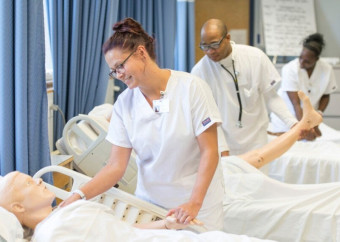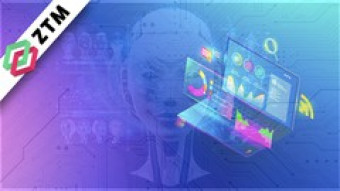
Updated on: 24 May 2021 by Aris Apostolopoulos, 7 mins to read
Setting and noting down training objectives may be the most significant, yet most overlooked phase of the training and development cycle. With the L&D team raring to go straight to designing slides and organizing classes, putting together a training objectives plan is often pushed down on the list of priorities and isn’t given the attention it deserves.
Smart training objectives, though, set your courses up for success. Specific, measurable, attainable, relevant, and time-bound is what you should aim for (but more on that later). Following the SMART format, you will also be able to communicate these objectives in a way that intrigues and resonates with employees.
This article will show you how to create and write effective training objectives. First, let’s answer a key question:
Before your start writing down your training objectives, figure out what you want to achieve through training. Apart from company-specific goals, most benefits and objectives of employee training are universal. These are:
Once you have identified your training goals, it’s time to put them down on paper. These will be not only the building block of your training course but also your most convincing marketing material.
Does writing training objectives intimidate you? There’s no need to. These five tips will help you create effective, realistic, and measurable objectives for employee training like a pro. You’ll also find some examples for inspiration.
What do you want to accomplish with this training program? Improve employee performance? Address a knowledge gap? Teach new employee skills that will make your company more competitive? Whatever the case may be, you need to make sure that the purpose of the training is clear.
Remember that training programs do not just come out of thin air. There is always a reason why training needs to take place. A training needs analysis will uncover skills and knowledge gaps among your employees and point you in the right direction. Once you’ve identified your training needs and decided on the purpose of training, you’ll find it easier to create and write training objectives.
Looking to simplify your training with a powerful LMS? Choose TalentLMS – it’s easy to set up, easy to use, and easy to customize.
Training outcomes are the measurable goals learners are expected to achieve at the end of a training program. Outcomes determine the success (or failure) of your training strategy since you’ll evaluate training based on whether or not your teams have reached these outcomes.
When writing down the desired training outcomes, make sure you’re specific and leave nothing to interpretation. Avoid using vague words like “understand”, “realize”, and “learn”. Use verbs that show tangible and observable action instead, like “create”, “demonstrate”, and “calculate”.
Using concise vocabulary will also help bring your point home and convince employees about the usefulness of training. So don’t just say “During this course, you will learn the basic functions of Excel.” A better-phrased, and more effective, training objective would be “After completing this course, you will be able to create and modify Excel files.”
When formulating training objectives you must take into consideration several parameters that will affect the design and delivery of your training program.
For example, the availability of a qualified instructor or venue can determine the way you deliver training. So will the type of your workforce (are they in-house or remote employees?) and your budget.
Take into account prerequisites, as well. Very often, learners might need to have a baseline knowledge of a subject or some familiarity with a skill to join a course. Don’t take for granted that they do and create impossible training goals.
These parameters can, and will, play a big part when designing and implementing your training program. Find out where you stand, take these conditions and limitations seriously, and create your training objectives accordingly.
Training objectives need to be grounded on observable, measurable outcomes. These outcomes, in turn, have to be based on certain criteria, usually key performance indicators or skill levels. Why?
Because the fundamental goal of training is to produce business results. So, unless the objectives of employee training are based on business metrics, training will be a waste of time and resources.
An effective and relevant training program is one that aligns training goals with business goals.
The SMART format has been the go-to standard when it comes to setting any type of objective – training or otherwise. Creating smart training objectives can be summed up in five letters, and these are:
S – Specific Training goals need to be specific and narrow. Who will gain what skills, and for which purpose? Focus on one specific skill or knowledge for each training objective.
M – Measurable Secondly, learning outcomes need to be measurable. This means that the newfound skill or knowledge should be able to be measured in specific terms, e.g., a 5% increase in quarterly sales.
A – Attainable Attainable means that the training objectives are realistic given the amount of time and resources available. For example, you cannot expect learners to master a complex skill given just thirty minutes or one hour of training.
R – Relevant Being relevant means your training goals answer the “Why?” question. Always remember WIIFM (“What’s in it for me?”). Learners need to know why they are in training and what they can get out of it. Will the skills or knowledge they’re going to gain help them perform better at work? Will they be able to use these skills in actual work scenarios?
T – Time-bound The time-bound element answers the question, “When?”. There is a saying that a goal without a deadline is just a dream. The same applies to training aims. The deadline is usually set at the end of the training program. Of course, in some cases, further practice might be required.
But how do you create effective learning objectives? Here are examples of vague learning goals converted into SMART training objectives:
Training objectives tie a training program with actual business results. Establishing clear, realistic, and measurable training goals at the onset of the training development process will play a big part in ensuring the success of your course.
Clear-cut training aims not only answer the audience’s intent “What’s in it for me?” (WIIFM). They also link training with company goals and measurable outcomes. A lot actually depends on these goals; so do the smart thing — and make them SMART!
Save time, frustration and money with TalentLMS, the most-affordable and user-friendly learning management system on the market. Try it for free for as long as you want and discover why our customers consistently give us 4.5 stars (out of 5!)
Try for free!
Originally published on: 22 Nov 2017 | Tags: Learning Goals & Objectives
Get started it's free!
TalentLMS is free to use for as long as you want! You can always upgrade to a paid plan to get much more!
 Classical Naptime For Tots
Classical Naptime For Tots
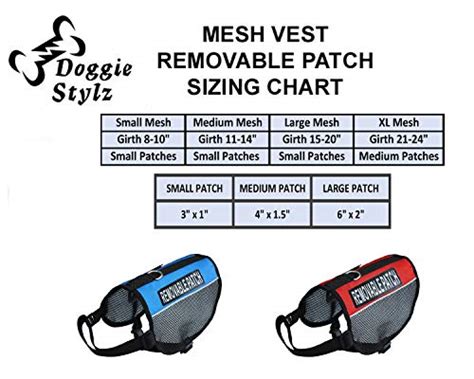 Doggie Stylz Set Of 2 Reflective Therapy Dog In Training Removable Patches Wit
Doggie Stylz Set Of 2 Reflective Therapy Dog In Training Removable Patches Wit
 6 Pcs Service Dog In Trainingworkingstress Amp Anxiety Response Embroidere
6 Pcs Service Dog In Trainingworkingstress Amp Anxiety Response Embroidere
 Service Dog In Training Patch With Hook Back And Reflective Lettering For Servic
Service Dog In Training Patch With Hook Back And Reflective Lettering For Servic
 Four Paws Wee Wee Pee Pads For Dogs And Puppies Training L Gigantic Xl St
Four Paws Wee Wee Pee Pads For Dogs And Puppies Training L Gigantic Xl St
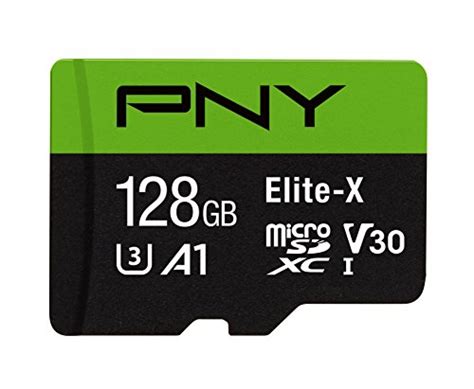 Pny 128gb Elite X Class 10 U3 V30 Microsdxc Flash Memory Card 100mbs
Pny 128gb Elite X Class 10 U3 V30 Microsdxc Flash Memory Card 100mbs
 Academy Of Beasts V Shifter Romance
Academy Of Beasts V Shifter Romance
 Beast Academy 5a Practice
Beast Academy 5a Practice
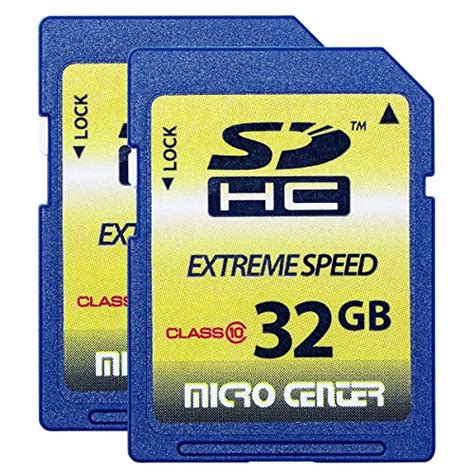 32gb Class 10 Sdhc Flash Memory Card Standard Full Size Sd Card Ush I U
32gb Class 10 Sdhc Flash Memory Card Standard Full Size Sd Card Ush I U
 Go Power F 200 Class T 200 Amp Slow Blow Fuse Silver
Go Power F 200 Class T 200 Amp Slow Blow Fuse Silver
 Blue Sea Systems 5116 Fuse A3tclass T 200a
Blue Sea Systems 5116 Fuse A3tclass T 200a
 Eureka Peanuts Classic Characters Deco Kit 840227
Eureka Peanuts Classic Characters Deco Kit 840227








